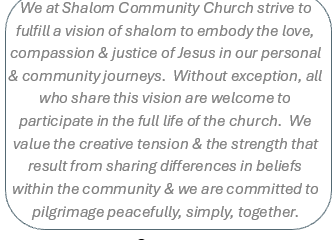Gravitational Waves
Supernal Triad, Deity above all essence, knowledge and goodness; Guide of Christians to Divine Wisdom; direct our path to the ultimate summit of your mystical knowledge, most incomprehensible, most luminous and most exalted, where the pure, absolute and immutable mysteries of theology are veiled in the dazzling obscurity of the secret Silence, outshining all brilliance with the intensity of their Darkness, and surcharging our blinded intellects with the utterly impalpable and invisible fairness of glories surpassing all beauty. – Pseudo Dionysius, Mystical Theology
It was a dark and stormy night. (pause) What are you thinking about right now? About Snoopy, ever attempting to write the great american novel? Or about Madeline L’Engle’s A Wrinkle in Time a book I hope many of you are familiar with? I grew up at a time when both of these writings where in the heyday of their popularity. A Wrinkle in Time remains one of the finest books I’d ever read. I had always assumed that Snoopy was using the best opening sentence possible to open his novel and that he was copying from the great author Madeline L’Engle. I had no idea that that beginning, “It was a dark and stormy night” came from English novelist Edward Bulwer-Lytton as the opening sentence of his 1830 novel Paul Clifford. I had even less idea that it was seen as florid and overly melodramatic. For me it was just perfect.
A Wrinkle in Time has been back in my imagination over the last while as I have pondered the significance of the discovery of gravitational waves inside our lenten theme of exploring darkness and meeting God there. I know, having talked to a physicist friend who attends to the reality of things like gravitational waves, that their discovery does not give us L’Engle’s tesseract making travel through time and space to distant worlds with unimagined wonders possible. But also at issue in A Wrinkle in Time are questions about how we come to know things and the picturing of the battle between good and evil as a struggle between light and darkness and these are the things I like to ponder with you. A Wrinkle in Time, and other books like it, bring us right up to the edge of what we can conceive and then they burst through our conceptions and create a new world for us to imaginatively inhabit.
But first let me tell you my version of the story of the gravitational waves. A billion years ago, a really big number, there were two black holes circling each other. One was 36 times the mass of our Sun and one was 29 times the mass of our Sun. They whipped around each other 250 times per second getting closer and closer until they collided together forming one really big black hole 62 times the mass of our sun. Then, 100 years ago this month, an oddly round number, Einstein wrote down a small equation describing general relativity. This equation changed how we understand gravity and predicted that there are gravitational waves. 40 years ago, a biblically long number, the National Science Foundation started funding research which would look for gravitational waves. They built some machines and then realized that they probably weren’t sensitive enough. So they built more machines leading up to two really big observatories at opposite ends of our country in Louisiana and Washington. They spent a billion dollars, a really big number, on these observatories. They are called LIGO and here is how they work. They have two 2.5 mile long vacuum tubes spaced like rabbit ears and they shoot lasers through the tubes at mirrors. The lasers bounce back. If the lasers line up on their way back nothing has happened. If they don’t line up then they are detecting gravitational waves. They can detect movement as small as one ten thousandth of a proton. Here’s where the story gets kind of crazy. The scientists were just about ready to turn the machines on for real, but they decided they needed one more trial run. Three minutes into the trial run they recorded eight waves each one a little bigger than the one before it. These waves hit the Louisiana observatory 7 milliseconds before the Washington one. As soon as they heard the waves the scientists decided that they weren’t actually in trial mode anymore and that they had started using the observatory for real. Once they’d made this decision they decided that they would need to run the observatory for 16 more days so that they would be able to understand what was background noise and what was signal. They knew they had heard something, but they were not sure what they were not hearing. It is often more difficult to be sure about what is not true than about what is true. It took another month to collect those days of good background noise.
Let me summarize. We built two huge observatories to test a 100 year old theory. As soon as we turned them on we heard a chirp which the theory tells us means that a billion years ago two black holes collided. The theory tells us how big the black holes were and when and where they collided. The data fits the theory pretty much perfectly.
We can listen to these waves. They are very weak and need to be amplified so that we can actually hear them but them come across the years to us inside our hearing range.
I’m pretty excited about this. I’ll admit that I can’t get myself quite as giddy as my physicist friends can, but this is pretty awesome stuff. Mostly, I’m excited because this seems to me like a great way to think about an even more difficult idea also right on the edge of what we can conceive, that of divine darkness and negative theology. This is the idea we learn about God by focusing on what God is not. The classic statement of negative theology is by a writer we know as Psuedo Dionysius in the 5th century after Christ.
The idea that humans can not know who God is old. Moses is refused God’s name and told he can not look directly at God’s face. Jesus taught through parables recognizing that stories and analogies get at God’s reign more effectively than laws and traditions. Christian theologians have argued that God is not like humans, not a creature, not beautiful, not good, not strong, not a thing of any kind for more than a thousand years. God is not obvious. This is the truth that negative theology teaches.
But wait you are thinking; Ezekiel did look at God’s face. Mary recognizes Jesus as he emerges from the tomb, and Jesus let Thomas see the holes in his hands. Laws and traditions are a reliable path to the divine. Christian theologians have argued that God became a human in Jesus, was a creature, and is more beautiful, and good, and strong, than anything for more than a thousand years. You are right and this is the truth that positive theology teaches.
Both positive and negative theology have as their goal a better understanding of God. They have the same goal. Lightness and darkness are paths to the same goal. God is found when we learn who and what God is. God is also found when we learn who and what God is not. Often darkness is a metaphor for evil or for the difficult things in our lives: an illness, the loss of a career, the loss of a love, or a loved one. I wonder sometimes how pervasive the impact of the association of darkness with evil is in our racially charged context in the USA; and how deeply it has warped our witness and mission. I want to develop our appreciation of darkness in a different direction than Madeline L’Engle or even than the testimony of much of scripture which has darkness resonate with these uncomfortable trials and tribulations.
Instead I want to suggest that darkness is simply another way of knowing. We do not know things the same way when we seek to know them in darkness, but it is not a less reliable path to understanding. It may be more difficult to know things in a different way, by denying ourselves our ordinary well travelled paths to knowledge. It may even shape our understanding in ways that make it difficult to connect with people who know only according to the light. This is the point of connection to our lenten journey. As Jesus moved towards Jerusalem we can sense the contrast between those are focused on politics, economic stability and legal tradition and the way of Jesus which represents a different approach. And there are moments in the week leading up to Gethsemane, Palm Sunday most decisively, in which it seems like the two approach could happily co exist and even begin to learn from each other. These moments of connection between different ways of know are what I am emphasizing this morning.
In classical negative theology, to seek divine darkness is to negate God’s attributes. God is not light. God is not power. God is not weakness. This way of knowing gives us an understanding of the God that lies beyond our perception, our language, our universe. To negate our knowledge can bring greater understanding. I think that the observation of gravitational waves provides for us another path to understand our universe, darkness and negative theology.
First, everything about the event that we are measuring is dark. Two black holes both massively big. A collision that threw off the energy of three suns in waves that shot through gravity for a billion years. For the two tenths of the second that this collision took it was the most luminous thing in the universe “outshining” the light in the rest of the universe combined. But it wasn’t light it was dark.
Everything about the gravitational waves is dark; it is not light. Light falls in the electromagnetic spectrum. Everything about our interactions as biological creatures and that vast majority of our interactions with our environment, the other animals and insects, the birds, the plants and trees, the rocks and the water. All of these interactions are about electrical charges. On a planet all of these charges cancel each other out. There are equal positive and negative charges. But gravity is not subject to light. It is not positively or negatively charged. Gravity allows the moon to pull at our oceans and the earth to bind the moon to its orbit. These dark forces are operating relatively closely to each other and we have been able to see their effects and to think about them interacting for a long time. We can see the tide come in and the moon show up in the sky night after night, but when we see these things we are seeing the effects of gravity and not gravity itself. The moon and the oceans are very stable. Although gravity is active we can not observe it. The only way we could observe gravity would be if there were some truly massive objects moving in an unstable way so that they would create waves in the gravitational spectrum.
One of the rewards of dark thinking is the understanding in a different way. The story of the observation of the gravitational waves is this story. Einstein thought differently about gravity 100 years ago. He thought that there were gravitational waves but thought that we would never be able to observe them. By the 1970’s Rai Weiss had figured out how you might be able to measure gravitational waves. We then spent 40 years and a billion dollars building the observatories that could measure gravitational waves. Last fall we did it.
As soon as they heard the signal scientists knew that they had detected gravitational waves. Often scientists will observe something thousands of times before they feel confident with their observations, but this signal was clear. The waves from this particular event only pass us once. If we hadn’t turned on the observatories now we would have missed it, but we knew it was significant even before we could separate the signal from the noise.
Everything that we have been able to measure until now is light. Finally with this observation we have our first measurement of something that is not light. And now we will be able to push forward to more understanding by using this dark knowledge. We have been observing supernovas for almost 2000 years. But because we have only been able to observe light we can only see the outside of the supernova. Now that we can observe gravitational waves we may be able to see what is happening at the core of the supernova. Observing darkness or gravity will allow us to see through the supernova. It was a long difficult route to gain this understanding, but it is still very reliable.
Allow me one further example of how difficult this way of understanding is. In describing the event to you you’ll remember that I really trusted your imagination and skill with units. 62 times the mass of the sun? A billion years? A ten thousandth of a proton? We don’t really have any idea how big or long or small these numbers are.
Protons are small, people; .84 femtometers, a really small number. They are so small that they are on the edge of what we can conceive. I have an analogy that will give us the size of the proton relative to a grapefruit but I need to cheat. If a proton is as big as a blueberry then the atom that the proton is in is as big as a football field. Now for the cheat. Make that football field sized atom blueberry sized again and imagine it inside the earth. A atom fits inside a grapefruit in the same way a blueberry fits inside the earth. The earth is your grapefruit.
It is good for us to push ourselves to the edge of what we can conceive when we are trying to understand gravitational waves or God. Pushing ourselves beyond our ordinary categories allows for better understanding. Finally the whole universe, all of the light and all of the dark, all of it is good. Knowledge about both electromagnetism and gravity, about light and dark, about what God is and what God is not, all of it yields greater understanding.
The work of attending to difficult concepts, to imaginative worlds we can barely fathom, or of upending our deep prejudices is central to the work of cross cultural communication and when done well, not only allows us to communicate more clearly, but also to understand more completely. When we can understand God by talking about both who God is and what God is not we bring ourselves closer to God. As we learn how to describe a supernova both in terms of what we can see and what we can only hear we will can a better picture of our universe, and perhaps of its origin. When we engage another culture should we not also expect that there are multiple origins and paths to form a connection.
An interesting article about the Pirahã people of the Amazon has been making the rounds recently. According to Dan Everett, the subject of the article, the Pirahã don’t use recursion in their language, and occupy the world of the present without much reference to the past or the future. The article makes some hay of the fact that the Pirahã’s rejection of Christianity (based in their disinterest in learning about someone who lived his human life 2000 years ago) is now shared by Everett who was once interested in converting the Pirahã. The work of discovering how a culture like that of the Pirahã might begin to connect to a Christian grammar will be very difficult. But if a conversation like that could be begun the benefits for our understanding of our faith would be significant. Often when we engage the other we learn more about ourselves than we teach; thanks be to God.
The work of banishing non-positive references to darkness from our theological vocabulary might be similarly as challenging. How might our imagination be shifted if we understood not just the battle between light and darkness but also the ways that light and darkness illumine the same reality and draw us closer to God? How differently might we engage #blacklivesmatter or the scepter of police violence decades after having acquired this new imagination?
The work of cultivating our theological imagination needs to find ways to be paired with the discipline shown by Einstein, Weiss, and now voiced by Gabriela Gonzalez, the spokesperson of the LIGO Scientific Collaboration. Embrace the darkness and turn towards God in whatever way you can. Amen.



0 Comments